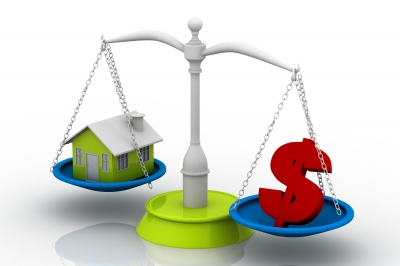Refinancing: What’s not to like? Not only can you lower the interest rate, you can either reduce your monthly payments or reduce the length of the loan. Either way, you pay less in the long run!
While on the surface it’s a nearly foolproof way to secure better terms for your loan, there are a few twists and turns to be aware of on the way to securing a better loan. The most important ones are closing costs, which can swiftly eat through any savings you may make and greatly delay the break-even point.
What Are Closing Costs?
 Closing costs are what you pay to have the loan processed. These costs include every payment made during the loan approval process that is not a loan payment. These include various underwriting costs, broker commissions, taxes, attorney fees, and dozens of other expenses that you cover out of your own pocket. The list of expenses varies from broker to broker but can be expected to total on average nearly $4,000 for a $200,000 loan. Although some people may include purchasing “points” in this category, this is not quite true. After all, points do give you something in return i.e. even lower interest rates.
Closing costs are what you pay to have the loan processed. These costs include every payment made during the loan approval process that is not a loan payment. These include various underwriting costs, broker commissions, taxes, attorney fees, and dozens of other expenses that you cover out of your own pocket. The list of expenses varies from broker to broker but can be expected to total on average nearly $4,000 for a $200,000 loan. Although some people may include purchasing “points” in this category, this is not quite true. After all, points do give you something in return i.e. even lower interest rates.
Can Closing Costs Be Avoided?
The simple answer is No. While some mortgage refinance brokers offer loans advertised as without closing costs, this is not entirely true. You are still paying the closing costs, except the broker pays them upfront and you later repay him. How? It’s quite simple. The interest rate on your loan is higher than if you paid for the costs out of your own pocket. That’s how they are paid. What you can do is limit the amount of money spent on the closing costs.
How to Limit Expenses?
It’s quite simple. First, do your research on the closing costs and their estimates. Be ready to dispute the necessity of paying them or the amount of money you’re supposed to hand over to your broker. Often, a simple question is enough to make the broker lower the fee or waive it. In general, the more informed you are, the higher your chances of making the closing costs more manageable.
How to Factor Them In?
The simplest way to include the closing costs in your refinancing calculations is to simply calculate the overall savings you expect to make when refinancing and deduct the estimated closing costs sum from the savings. If you don’t break even, you’ll be losing money on the refinancing, so maybe sticking to the old terms for a while longer is more advantageous. Generally, the rule of thumb is that whenever you can reduce your mortgage costs by 1% or more it pays to refinance. However, remember that these are all estimates. You will need to forecast your ability to make house payments in the future, and a better interest rate may balance out the additional closing costs, depending on how long you plan to stay in the property. As usual, do your research and stay in the know. That’s the only way to keep closing costs at a manageable level.
See Also:
- When is it Right to Refinance?
- When Mortgage Rates are low do you Reduce your Payment or reduce the length of the Loan?
- Finding the Right Mortgage
Image courtesy of Renjith Krishnan / FreeDigitalPhotos.net.




